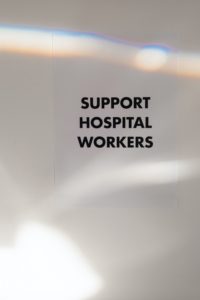 Visionary leaders have been assessing and reassessing the medical system within the United States for years. Periodically, piece-meal solutions get implemented with great intent and hope for a smoother operation or more equitable distribution of health services. However, this national healthcare crisis has thrown the slow, piece-meal concept into an obsolete if not destructive state.
Visionary leaders have been assessing and reassessing the medical system within the United States for years. Periodically, piece-meal solutions get implemented with great intent and hope for a smoother operation or more equitable distribution of health services. However, this national healthcare crisis has thrown the slow, piece-meal concept into an obsolete if not destructive state.
As we watch the results of this first wave of the current global pandemic, we are being forced to see the condition of the American health care system. Nationally, the intentional disregard of previously put-in-place protocols, the decision to close all committees with an expertise in pandemic preparedness and treatment, the refusal to treat a national problem as a national issue, and the elimination of personnel within China who could have easily warned of the impending situation, supported a Perfect Storm.
Combining that with the conditions within so many hospitals that were ill-equipped to handle the mass hospitalizations, the massive assaults on health care equipment and supplies, as well as the need to cancel all elective and/or non-emergency surgeries, put the entire population at a disadvantage while impacting profit and loss exponentially.
I truly believe that pandemics will be occurring far more frequently, and with greater and greater severity. As always it is a waste of time pointing fingers, what is needed is to assess where failures or inadequacies existed so we can prepare to respond rather than react before the next occurrence. It may be a resurgence of the current problem or the introduction of another pandemic with different symptoms, requiring different tools to combat the symptoms and rapid development. Regardless, visionary leadership is needed to develop and prepare for where health care goes from here. Their values, vision, skills, and experience are now an absolute necessity. 
Diversity in health care distribution, education of a potential client-base, a team approach to inclusive health care, private, city, and state hospitals acting as one unified health care system rather than isolated entities, and so many more specific and broad changes in mindset, vision, and shared assets are all concepts, and needed pragmatic realities, calling for implementation.
Effective leadership, whether political or within the businesses of hospitals and medical practices, require that we anticipate worst-case scenarios, along with possible procedures and protocols for getting and staying ahead rather than struggling to catch up.
Preventable problems from lack of basic equipment, to the emergency-induced dealing with patients through tele-med, require that our medical systems be in place to guarantee that all patients, and medical personnel are each treated with respect and care regardless of circumstances. Patients being left in hallways, and doctors being rejected for reimbursement because tele-med hasn’t been accepted yet by all insurance providers are examples of being committed to paperwork and the status quo rather than patient or practitioner care.
Within a post-pandemic business model, both groups need to be the priority in all medical situations but most especially in a time of emergency and/or pandemic conditions. Visionary leaders have the skill set to step back and create the needed picture within this value system while working with a group of diversified leaders, each with unique skills who not only have permission to create great change but an openly awaited expectation for results – not piece-meal but cohesive and expansive.
The ability to think on their feet is a skill set that creates great, trusted surgeons. The same quality is required for visionary leaders who certainly need to be prepared well ahead of time for upcoming needs and yet who can still quickly implement whatever changes are required in a crisis.
If we are to now rise to the occasion of creating a system that can handle a revamped day-to-day hospital and medical care administration, with an amended approach to patient education and involvement in their own health, and diversity in distribution, we will have the needed system and people in place. That is the greatest preparation for what is to come next. All this is possible if that is the intent. New paradigms are only frightening when we forget the unlimited possibilities of teams and thinking far outside of the box that has kept us stuck in the world of “what is.” Visionary leaders live in a world of “what can be” – frequently requiring only a shift of perspective.

